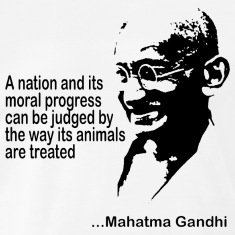
With a municipal area of 219.06 km² and a population of 9.57 lakh (2011), Guwahati is one of the fastest-growing cities in India. Under the ‘Smart City Mission,’ Ministry of Urban Development, the city is also a ‘Smart City.’
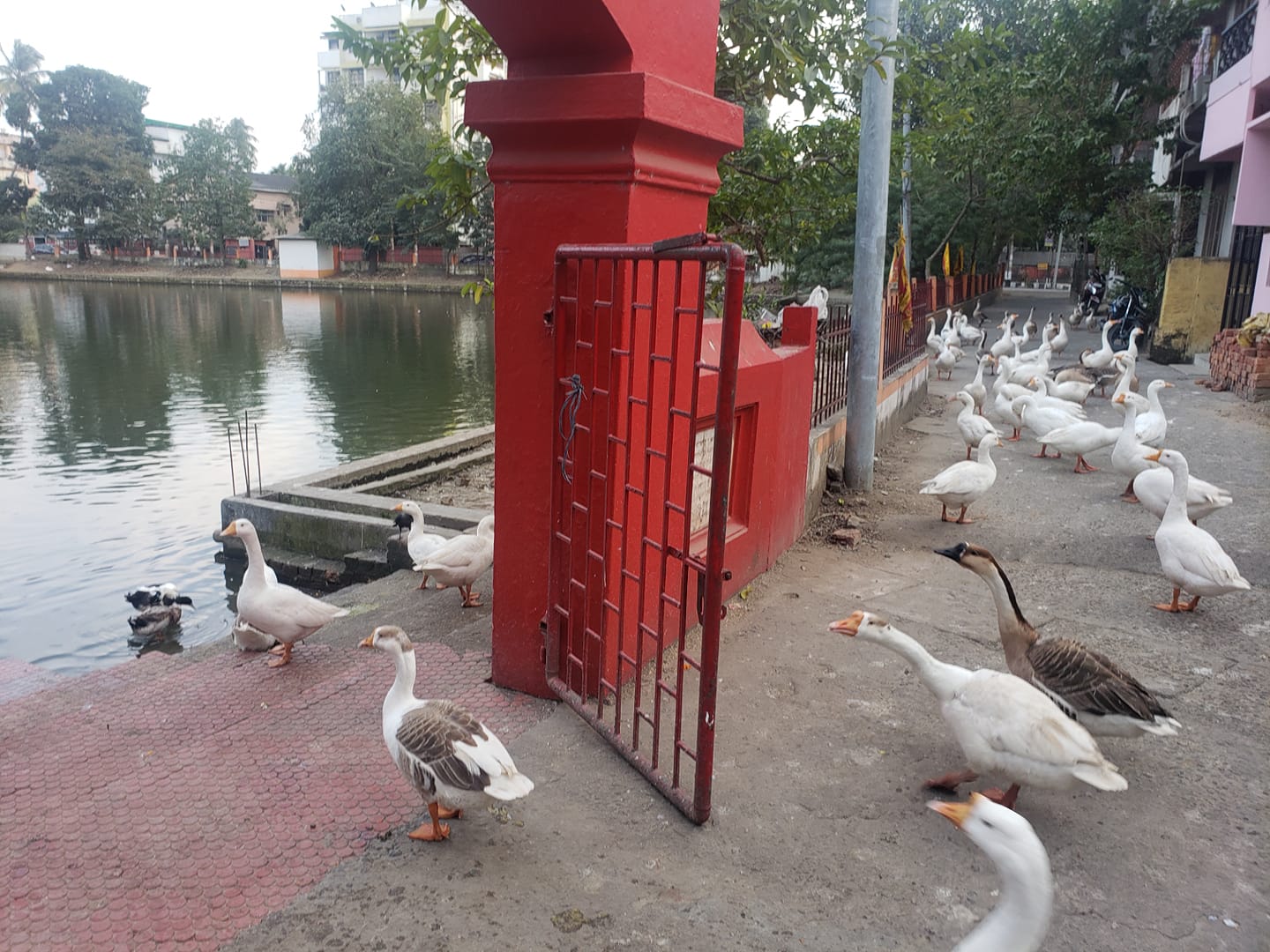
Sri Sri Ugratara Devalaya ducks at Jorphukhuri, Guwahati
As per the 19th Livestock census (2012), there are 604 farm animals per 1000 households in the Guwahati (Kamrup) metropolitan district. As per the 6th economic census of Assam (2013), the number of livestock establishments within Guwahati (Kamrup) Metropolitan District is 3376 numbers. This number is 77.73% of total agricultural establishments within the district and 29.3% of urban livestock establishments within Assam. As per the same census, the 3376 livestock establishments in the Guwahati Metropolitan Area employ 7139 individuals.
Urban livestock rearing is an important economic activity that supports income generation of the poor and their nutrition. Peri-urban livestock farms support the significant demand for fresh and perishable animal-based food from cities’ growing human population. A prominent, mostly poor section of Guwahati’s urban workforce is undertaking various livelihood activities, including livestock keeping. The livestock rearing is often seen primarily on urban peripheries or open spaces within the city, rooftops, including in invaded forests, hills, and other reserved lands within and in and around the city. While farming in the town and encroached areas is primarily informal, organized livestock farming is common in peri-urban areas to meet the city’s demand for livestock products.

Peri-urban livestock farming areas that feed Guwahati City ( Source: Report of the Taskforce on Agriculture Development, Submitted to NITI Aayog, Government of India )
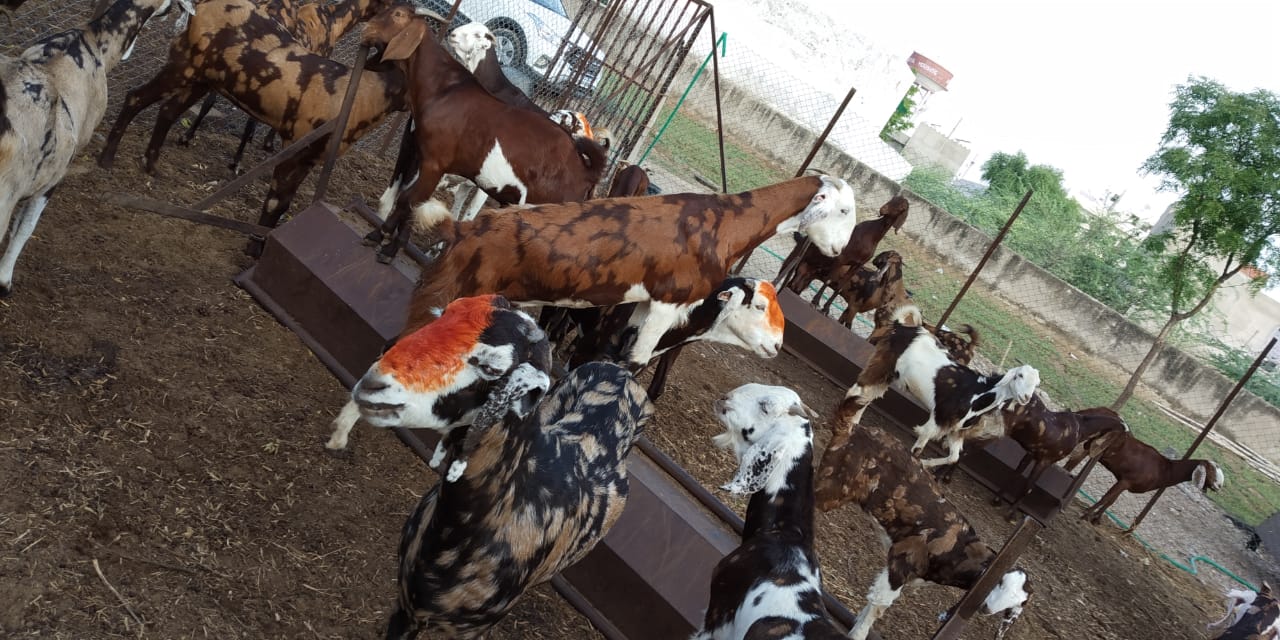
Guwahati Goat Farm
Besides livestock, about forty thousand dogs live on the city’s streets. ( Source: JBF –Just Be Friendly ). There are also a number of work animals.
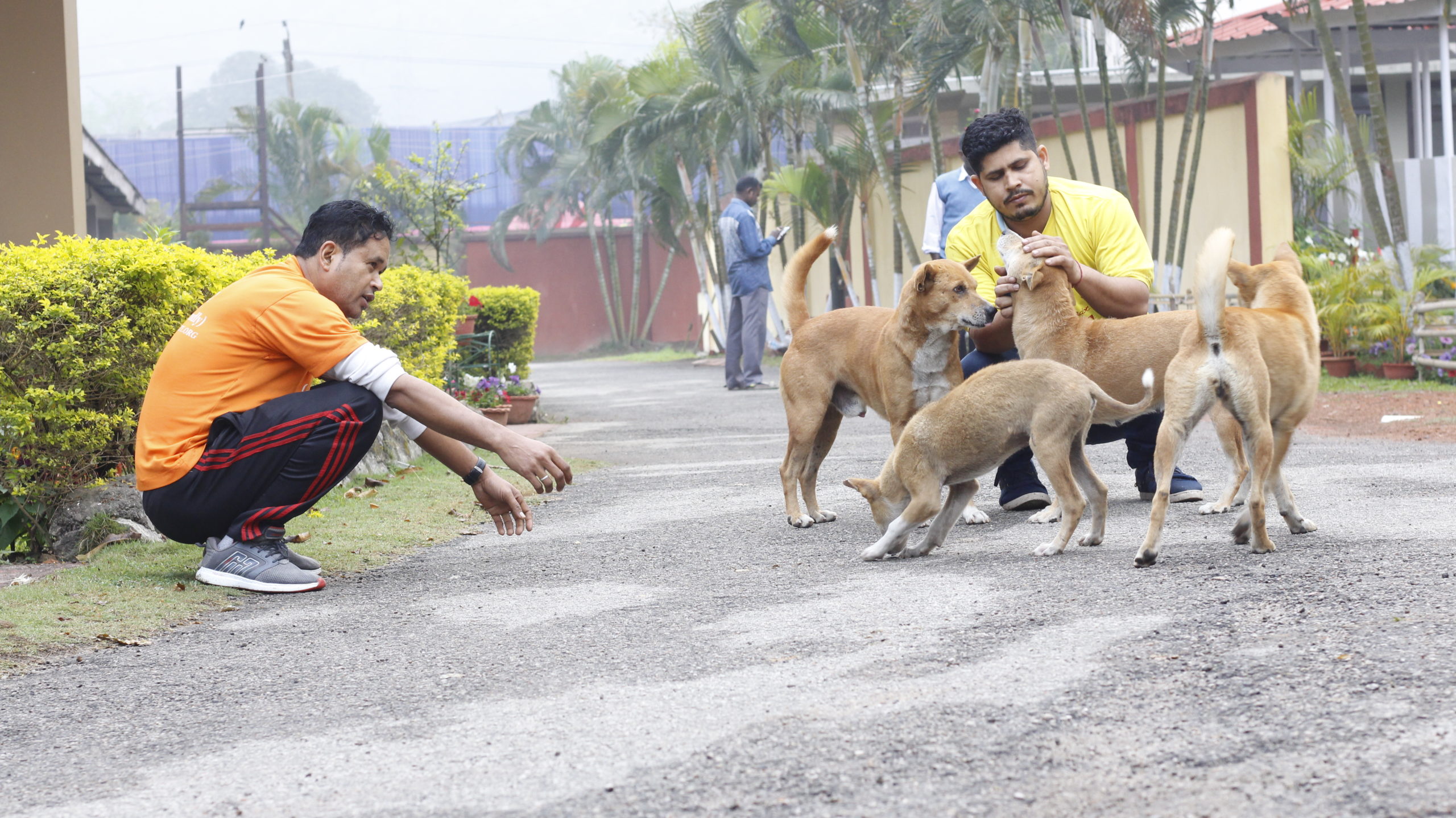
Guwahati-based NGO JBF-Just Be Friendly reaching out to street dogs.
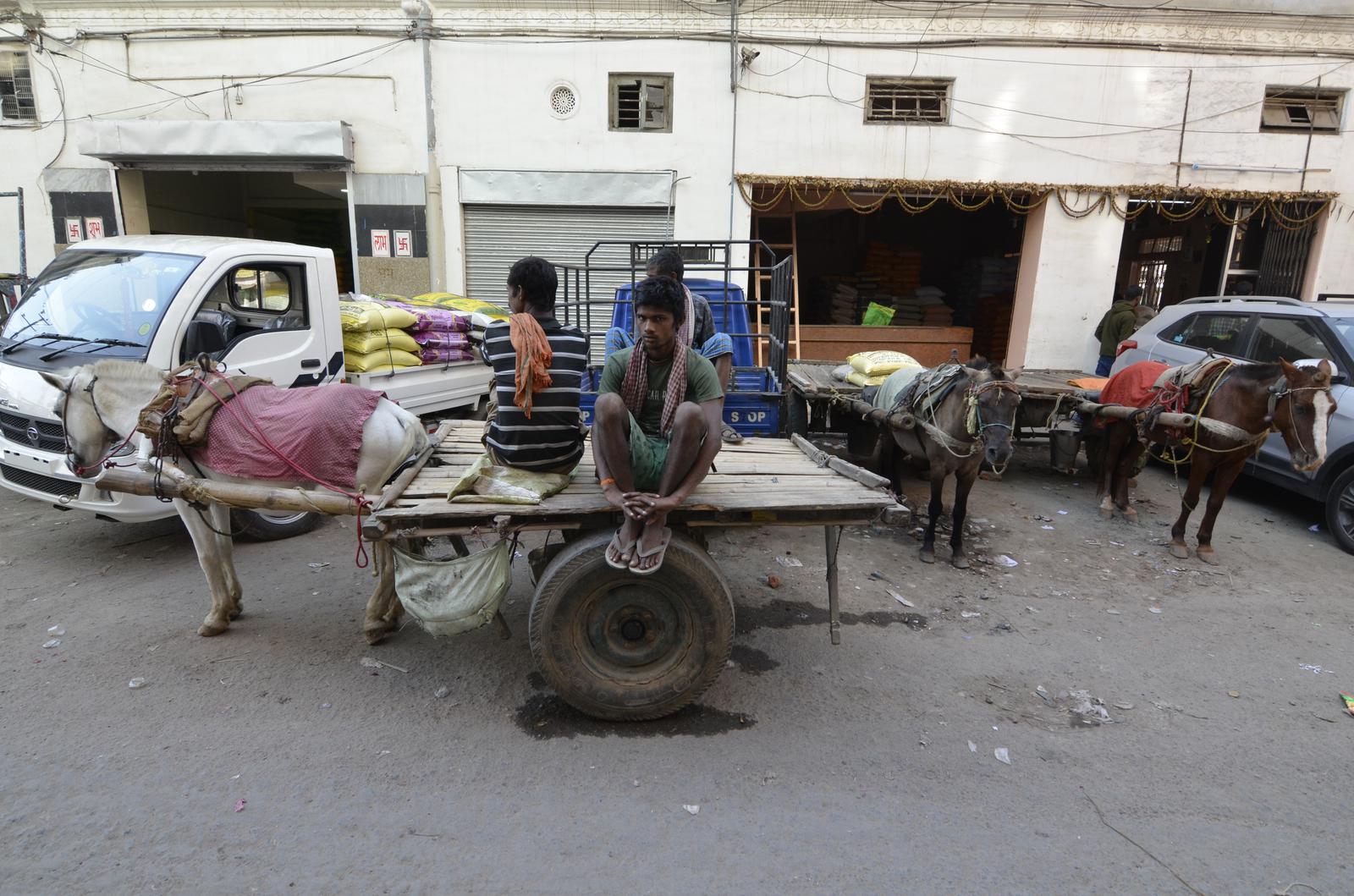
Horse Carts For Goods Carrying to Local Shops At Guwahati Fancy Bazaar, Guwahati Assam ( Published with digital use rights from Picxy, Photo by Anowar Hazarika )
Guwahati has ten reserve forests around the city area, sheltering a wide range of wildlife species. The haphazard expansion of the city has degraded most of these forests areas. The situation has led to increased incidents of human-animal conflicts. With increasing traffic, injury, and accidental cases involving street and wild animals/ birds have become an everyday affair within the city.
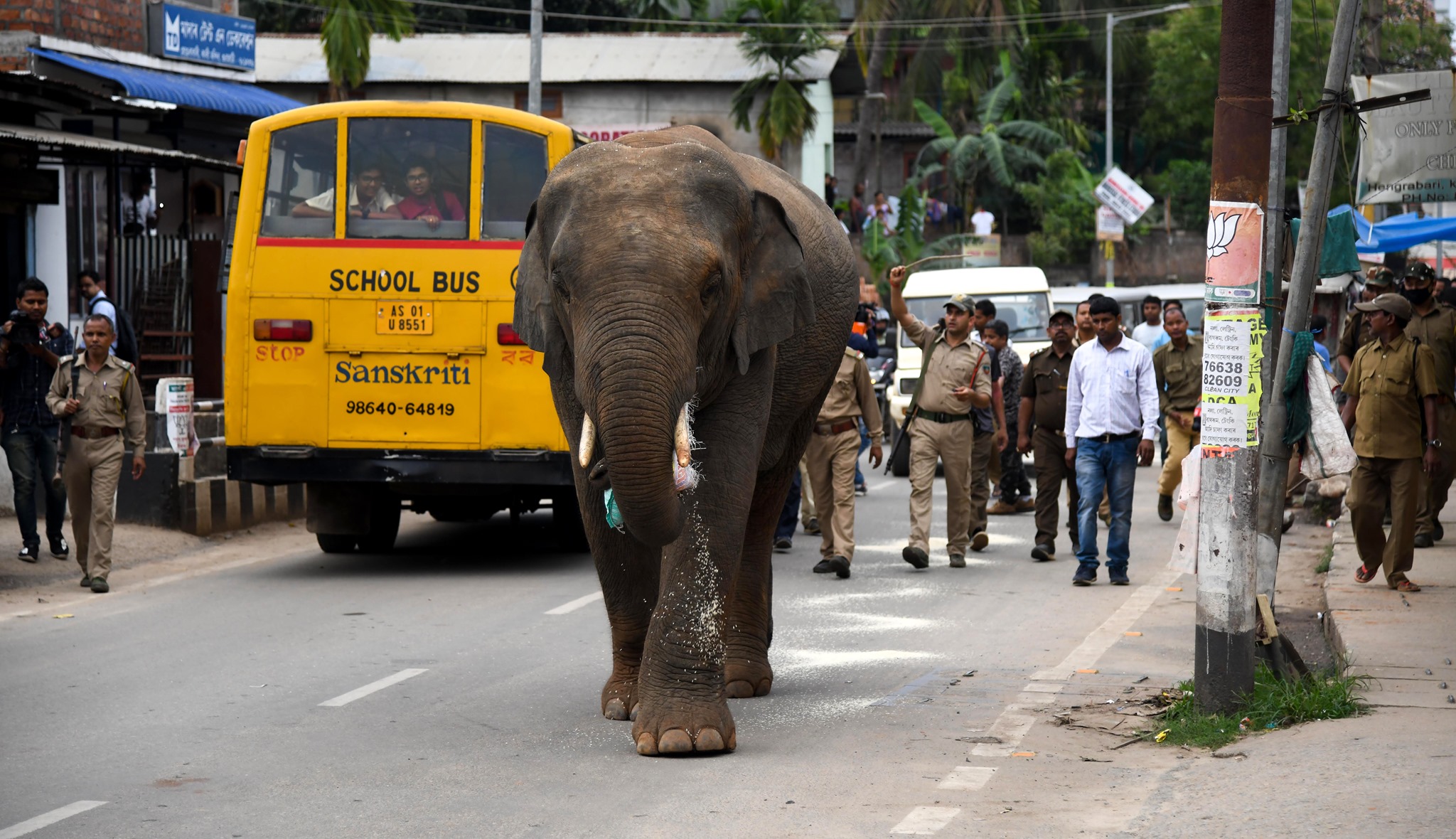
Forest officials and police personnel try to chase away a wild male elephant at the Hengrabari area in Guwahati on April 30, 2019. – The elephant came down from Amchang Wildlife Sanctuary ( Source: India West, BIJU BORO/AFP/Getty Images)
The dense human population of Guwahati city, mixed with livestock, scavengers, and vectors, provides optimal conditions for the emergence and spread of human diseases. Animals may also bring pathogens, some of which are zoonotic. The livestock keeping may increase or contribute to potential vectors of disease, such as mosquitoes and rats, to breed and thrive.
Guwahati city in recent years has suffered from vector-borne diseases like Dengue, lymphatic filariasis, etc. The state of Assam as such reported 3,391 Japanese encephalitis (JE) cases from 2010 to 2016. However, the incidence of JE within Guwahati is relatively low. Research indicates a prevalence of Bovine tuberculosis (BT) and Brucellosis (few serious animal health problems with public health significance) in urban dairies of Guwahati city. Most urban dairies of Guwahati city (approximately 600+, many of whom are members of 8 numbers of milk producers’ cooperative society) operate under the traditional sector and supply mostly unprocessed milk to consumers and sweet shops. There is an urgent need to review the institutional, legal (regulations), and policy framework to address the need for urban livestock keeping and to protect the public from associated diseases.
The above discussion highlights that Guwahati Smart City needs a better public policy for safe urban farming, reduce human-animal conflict, risk-based disease control measures, improve city development planning and disaster preparedness.
A veterinary resource centre with the following services is the need of the hour. There is ample scope for collaboration and public-private participation
- Animal control/rescue services,
- Advanced emergency care ( For Farm, street, work, and rescued wild animals/birds)
- GIS / Drone-based mapping of population, farms, and risky areas for targeted veterinary and public health-related preventive services
- A diagnostic cum research facility that can help monitor the pattern of growth, bio-security, and disease incidence within urban livestock and other animals.

